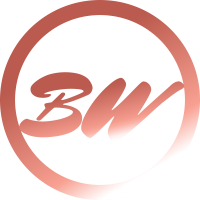When Learning Becomes a Crutch: Navigating the Fine Line Between Growth and Avoidance
Navigate the thin line between growth and escapism. Expert tips for lifelong learners to stay focused, balanced, and impactful. #CreativeGrowth

This is an essay about the double-edged sword of learning for creative professionals. If you've ever found yourself endlessly consuming information without applying it, or using education as a way to avoid tackling real challenges in your work, this piece is for you. If not, feel free to skip it.
The Learning Paradox
As creatives, we're naturally drawn to learning. The pursuit of knowledge feels like progress, and in many ways, it is. We learn to expand our skills, to signal our value to clients, and to sharpen our critical thinking. These are all noble goals, and they can genuinely propel our careers forward.
But here's where it gets tricky: the very thing that can elevate our careers can also hold us back. Learning and growth aren't always the same thing. Sometimes, our quest for knowledge becomes a comfortable hiding place, shielding us from the messier aspects of creative work.
Think about it this way: reading about painting techniques can improve your art, but at some point, you need to put brush to canvas. Studying client communication strategies is valuable, but it doesn't replace the experience of actually navigating a difficult conversation. This is the paradox of learning for creatives - it's essential, yet it can become a barrier if we're not careful.
The Psychology of Learning as Escapism
Why do we sometimes choose learning over doing? The answer lies in our psychology. Dr. Piers Steel, a leading researcher on procrastination, explains that we often gravitate towards tasks that offer immediate rewards and avoid those with delayed gratification. Learning gives us a quick hit of accomplishment, while tackling a challenging project or client interaction comes with the risk of failure or discomfort.
Moreover, psychologists have identified a phenomenon called "productive procrastination." This is when we engage in tasks that feel productive (like learning) to avoid more important but potentially uncomfortable tasks. It's a form of self-deception that allows us to feel accomplished without actually moving towards our primary goals.
A study published in the Journal of Consumer Research found that the mere act of gathering information about a goal makes us feel like we've made progress towards that goal, even if we haven't taken any concrete actions. This "false sense of progress" can keep us stuck in a cycle of perpetual learning without real advancement.
Balancing Learning and Action
So how do we harness the benefits of learning without falling into the trap of using it as a crutch? The key is to create a deliberate balance between learning and action. Here are some practical ways to do this:
- Implement the "50/50 Rule": For every hour you spend learning, spend an equal amount of time applying that knowledge. Read about a new design technique? Immediately use it in a project, even if it's just a personal one.
- Set Learning Goals: Before you start a new course or pick up a book, clearly define what you want to get out of it and how you'll apply it. This intentionality can help prevent aimless information consumption.
- Practice "Just-in-Time" Learning: Instead of trying to learn everything at once, focus on acquiring knowledge as you need it for specific projects or challenges. This approach ensures that your learning is directly tied to action.
- Schedule Both Learning and Doing: Block out specific times for both education and application in your calendar. This can help prevent learning from overtaking your entire schedule.
- Reflect and Adjust: Regularly assess whether your learning is translating into tangible progress in your work. If not, it might be time to shift your focus more towards application.
Adapting Your Approach Throughout Your Career
It's important to note that the balance between learning and doing may shift throughout your career. For instance:
Early Career: When you're just starting out, you might need to lean more heavily into learning to build a foundational skill set. However, it's still crucial to pair this with real-world application, even if it's through personal projects or pro bono work.
Mid-Career: At this stage, your learning might become more specialized, focusing on advanced techniques or niche areas in your field. The challenge here is to avoid using continuous specialization as a way to avoid tackling broader career challenges, like expanding your client base or raising your rates.
Established Career: As an experienced professional, your learning might shift towards staying current in your field and exploring adjacent skills. The risk here is becoming complacent and using "staying updated" as an excuse to avoid pushing your boundaries or taking on more challenging projects.
In all these stages, the key is to maintain a clear connection between what you're learning and how it's advancing your work and career goals.
Final Thoughts
In the end, the most successful creatives aren't necessarily the ones who know the most. They're the ones who consistently apply what they know, who are willing to face challenges head-on rather than hiding behind more education. They understand that true growth happens not just in the comfort of learning, but in the discomfort of doing.
So the next time you feel the urge to take another course or read another book, pause and ask yourself: Is this moving me forward, or am I using it as a way to stay still? Your honest answer to that question could be the difference between stagnation and real, meaningful progress in your creative career.
Abandoning here,
Bradley
